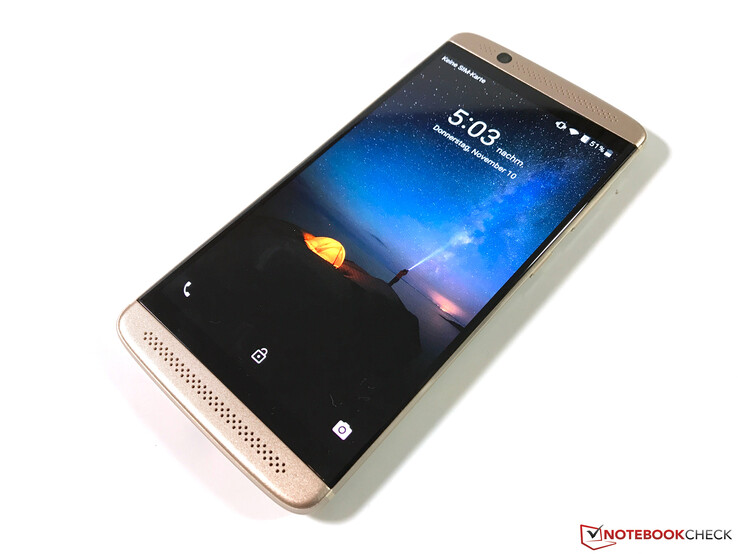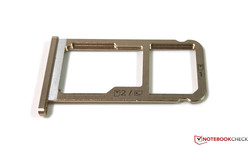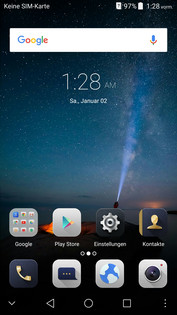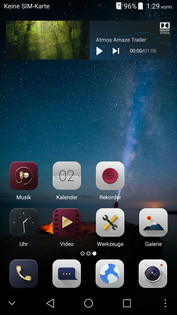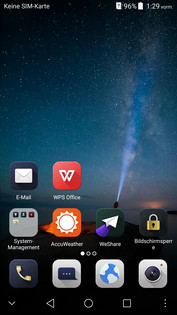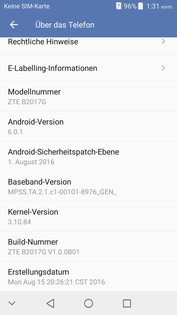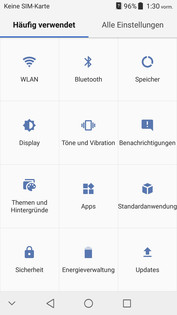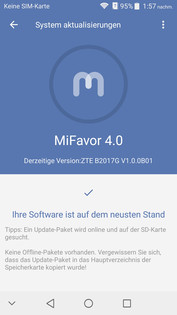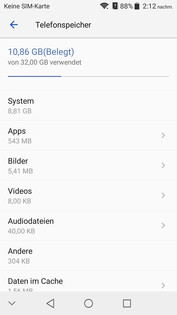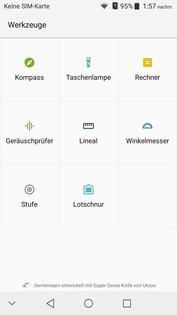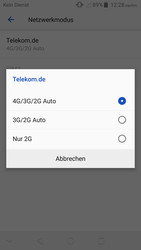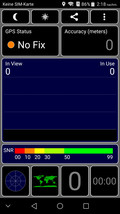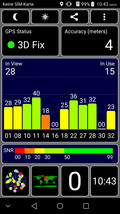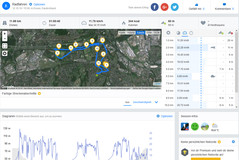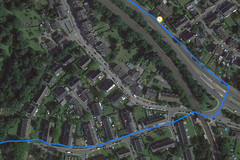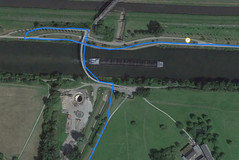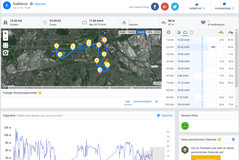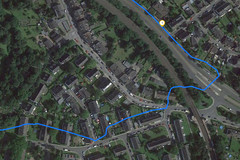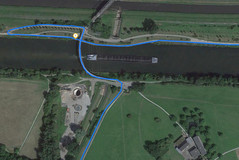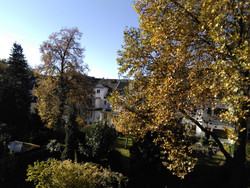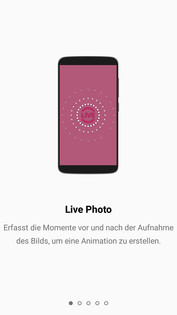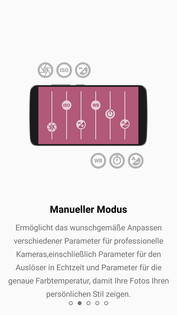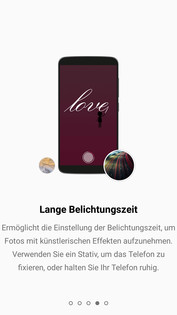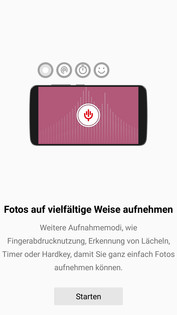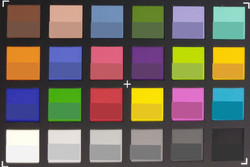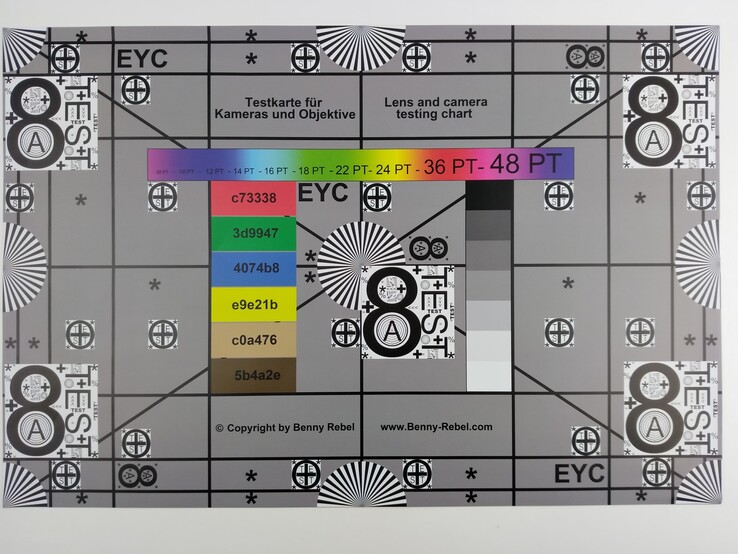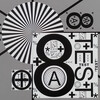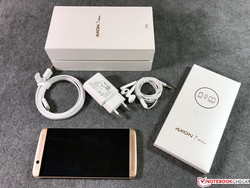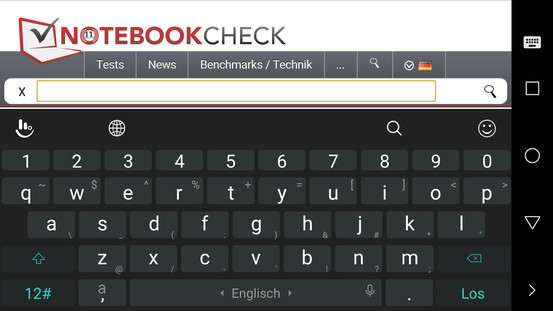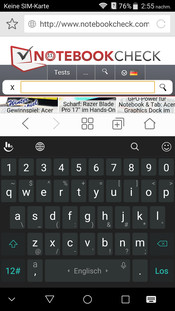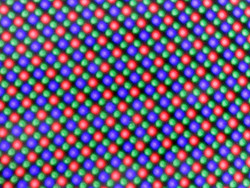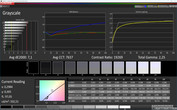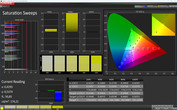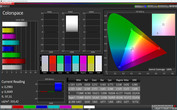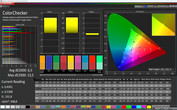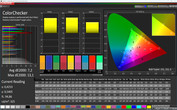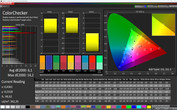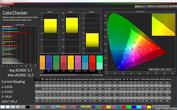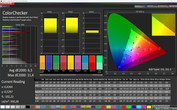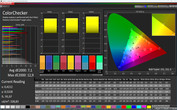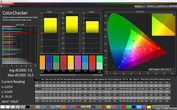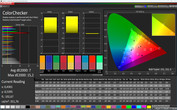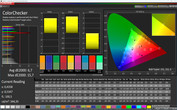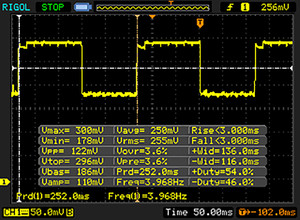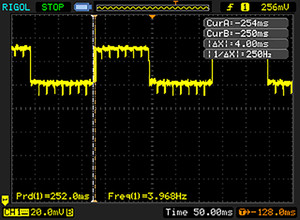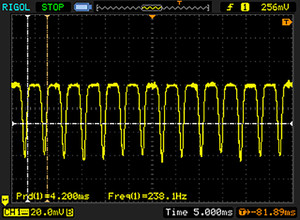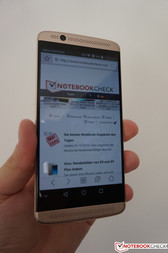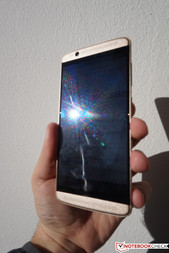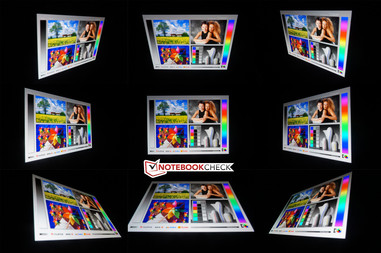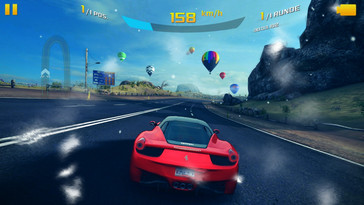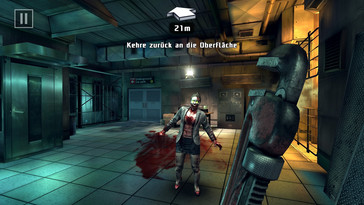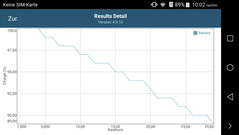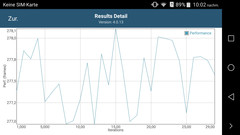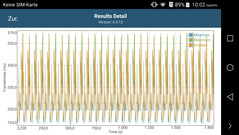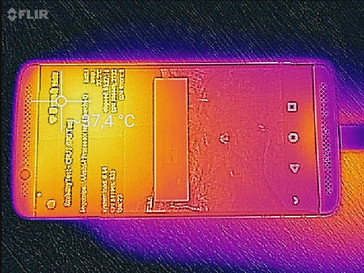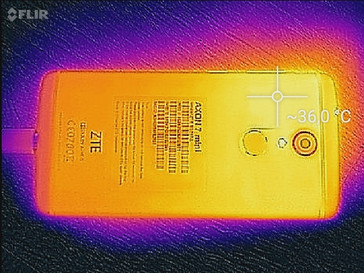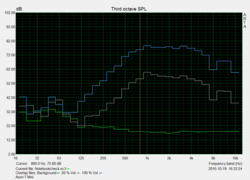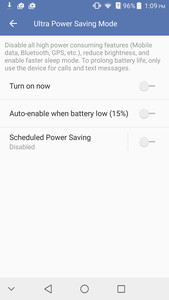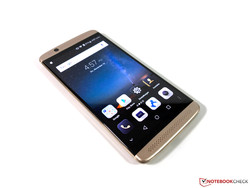ZTE Axon 7 Mini Smartphone Review

For the original German review, see here.
After the review of the new flagship smartphone Axon 7, we now have a look at the smaller sibling Axon 7 Mini from the Chinese manufacturer ZTE. It is the direct successor to the Axon Mini Premium we reviewed last March. The "7" in the designation is a bit surprising at first, but it seems that ZTE wants to create a certain comparability to the models from Apple (iPhone 7) and Samsung (Galaxy S7).
Looking at the specs, we are dealing with a very solid mainstream smartphone: 5.2-inch AMOLED screen with Full HD resolution, modern octa-core SoC from Qualcomm, 3 GB RAM, 32 GB internal storage, dual-SIM or storage expansion via microSD as well as Android 6.0 Marshmallow. Only the WLAN module stands out at a first look, because fast ac-networks are not supported.
Priced at 299 Euros (~$315), the ZTE Axon 7 Mini sits in a very competitive segment with many potential rivals. We will use the following smartphones as comparison devices for the article: BlackBerry DTEK50, Lenovo Moto G4 Plus, Huawei P9 Lite, Sony Xperia XA, Samsung Galaxy A3 and ZTE's own Blade V7.
Case
The cases of the Axon 7 and Axon 7 Mini hardly differ from one another apart from the size. The screen only has very narrow bezels at the sides and the bezels above and below the panel are pretty small as well. Similar to the flagship model, ZTE also equips the smaller sibling with two front-facing speakers, so the available space was used very well.
ZTE was able to transfer the great quality impression from the Axon 7 to the smaller model. The build quality of the aluminum chassis is excellent, and the handling of the mainstream smartphone is very good thanks to the rounded edges. The camera lens slightly protrudes from the back of the 7.8 millimeter-thin case, so the device can be a bit wobbly on a solid surface. The fingerprint scanner is located underneath the camera lens and sits a bit lower in the case, so you can easily feel it with the finger. An interesting aspect is the slightly roughened surface in the area of the two speakers, but you will hardly notice it in practice.
Both the physical buttons as well as the tray for the SIM cards (made of metal) can also convince us. ZTE offers the Axon 7 Mini in the colors gold and silver. Our test model is the gold version, and we recommend our review of the bigger Axon 7 for impressions of the silver model. Because of the unibody design, you cannot remove the battery.
Connectivity
With an octa-core SoC and 3 GB RAM, the Axon 7 Mini is well-equipped. ZTE also includes 32 GB internal storage, but you can only use about 21 GB after the initial setup and the update of all preloaded apps. It is also possible to expand the storage by up to 128 GB via microSD-card, but unfortunately you cannot format it as internal storage, even though the card reader is one of the faster modules (more on that later). You are also limited to one nano-SIM card in this case. Installed apps cannot be transferred to the memory card, either.
At the bottom is a USB-C port, but unfortunately it only supports the USB 2.0 standard. We determined average transfer rates of 17 MB/s when we copied a video file onto the smartphone, and 28 MB/s for the transfer from the smartphone to the PC. USB-OTG for the attachment of storage devices or peripherals is supported, but the video output is not. The latter is only possible wirelessly via Wi-Fi Direct or DLNA. Data transfers with other devices are also possible via Bluetooth 4.1 and NFC.
Software
ZTE ships the Axon 7 Mini with Android 6.0.1 Marshmallow as well as its own MiFavor 4.0 user interface. Contrary to the default Android UI, the differences are primarily limited to the visuals and the app drawer was waived as well. All in all, the handling is very smooth and there are additional gestures, including double tap to wake or unlocking the device with a predefined word (VoicePrint). There aren't many additional apps, but there are some actually quite useful tools as well as WPSOffice and AccuWeather, which can be deleted. An update to Android 7.0 Nougat for January was at least announced for the Axon 7, so it will probably be available for the smaller Axon 7 Mini as well.
Communication and GPS
Besides GSM and UMTS (see specs for full list of frequencies), the two nano-SIM slots also support fast LTE connections (Cat. 6) at up to 300 Mbps (downstream) and 50 Mbps (upstream), respectively. We noticed one thing during our tests in the metropolitan T-Mobile network: the Axon 7 Mini has problems in difficult reception situations. It was still possible to make calls, but the Internet was not available anymore. A simultaneously used Apple iPhone 7 was at least still browsing at Edge speed.
WLAN connections are limited to the standards 802.11 b/g/n in 2.4 GHz networks. Our standardized test with the router Linksys EA8500 determines 50-55 Mbps, which is good for a 2.4 GHz network, but the Axon 7 Mini does not stand a chance against the faster rivals with ac support. The web-browsing experience was inconspicuous in practice, but we noticed much lower download speeds when we increased the distance to the router.
| Networking | |
| iperf3 transmit AX12 | |
| Samsung Galaxy S7 | |
| OnePlus 3 | |
| ZTE Axon 7 | |
| ZTE Axon 7 Mini | |
| Asus Zenfone 3 ZE552KL | |
| iperf3 receive AX12 | |
| ZTE Axon 7 | |
| OnePlus 3 | |
| Samsung Galaxy S7 | |
| ZTE Axon 7 Mini | |
| Asus Zenfone 3 ZE552KL | |
The smartphone can locate its position via GPS, GLONASS and BeiDou, but it did not work indoors. Outdoors, however, the connection with the satellites was established quickly with an accuracy of four meters. We also check the performance on a bicycle ride and compare the results with the navigation device Garmin Edge 500, which did have some surprising issues in the area of the crossing this time (screenshot 2). The smartphone puts up a decent performance. It does not locate the position quite as often, so there are some "shortcuts", but there should not be any issues with everyday navigation tasks.
Telephone Functions and Voice Quality
Contrary to the previously mentioned issues with the mobile Internet connection, we did not have any problems with making calls. There were no annoying dropouts and we had no problems understanding the other person, but voices did sound a bit shrill on both sides of the call. Except for that though, we were very satisfied with the sound quality, and the microphones did a nice job as well. The Axon 7 Mini benefits from its loud front-facing speakers when you use the hands-free function. The provided headset looks just like the EarPods from Apple and does its job.
Cameras
At the front is an 8 MP camera that takes usable snapshots in good lighting conditions. This is at least the case as long as you do not zoom in, otherwise you will quickly notice the low sharpness. There is no supporting flash, so there is a lot of picture noise in low-light situations. Videos at the front can be recorded in 1080p.
The camera app itself leaves a good impression. Some functions are explained when you launch the app for the first time (see screenshots) and there is a comprehensive manual mode. Live photos, panoramas and time lapses are available as well.
ZTE uses a 16 MP sensor with autofocus, an aperture of f/1.9 and a dual-LED flash for the main camera at the rear. It cannot keep up with the 20 MP camera of the bigger Axon 7 in terms of quality, but the results are still not bad in daylight. However, the sharpness is a bit high and colors are a bit pale. The sensor captures less details than the rivals in low-light situations (see traffic sign in scene 3), but at least there is not a lot of picture noise in return.
Contrary to the standard Axon 7, videos cannot be recorded in 4K quality but only in 1080p at 26 frames per second. The quality of the recordings is good in daylight, but the sensor has problems with fast camera pans, especially in darker environments.
In addition to our regular sample pictures, we also check the performance of the camera under controlled lighting conditions. The results are not edited afterwards and there is no manual white balance. We take a picture of the ColorChecker Passport to evaluate the color accuracy. Colors are once again a bit too pale, but the deviations are pretty small. The test chart is quite sharp, and it only gets a bit worse towards the edges. We can only notice slightly blurry edges in the zoomed center section. All in all, it is a decent camera performance for a mainstream device, and it is certainly sufficient for snapshots.
Accessories and Warranty
ZTE is quite generous in terms of accessories. Besides the usual stuff like the modular power adapter, USB-cable, headset, and service brochures, the box also reveals a transparent protective cover, which can be attached on the back of the smartphone.
The standard warranty period is 24 months. After registration of the smartphone with Axon's VIP service, however, you will get another year. This VIP service also covers a display repair within the first six months if it is not covered by the warranty as well as one water damage repair within the three years.
Input Devices and Handling
The touchscreen recognizes up to 10 inputs simultaneously and also executes them well in the peripheral areas. The fingers glide easily across the screen. ZTE uses onscreen Android buttons, because there is not much space underneath the screen. The virtual keyboard is called TouchPal and offers an additional row for numbers as well as symbols above the regular keys. This means there is not much space left for the actual screen content in landscape mode, but it is very convenient to use.
The physical buttons are carefully integrated into the chassis and produce a convenient clicking sound with even pressure points. The fingerprint scanner on the back works very reliably and not only unlocks the smartphone but also triggers the camera or accepts calls. You can store up to five different fingerprints.
Display
While the bigger Axon 7 is equipped with a QHD-AMOLED screen (5.5-inch), ZTE uses a 5.2-inch Full HD panel for the Axon 7 Mini. The resulting pixel density is a bit lower at 423 PPI, but it is still sufficient for crisp images. The display technology itself is identical, because the smaller model gets an AMOLED screen as well. Black pixels are not illuminated, which results in an infinite contrast ratio, at least in theory.
The latter often compensates for the lower luminance compared to IPS-based rivals, and this is also the case for the Axon 7 Mini, although the results are not bad at all. We can measure up to 350 nits (335 nits on average) on a pure white picture and even a very good result of 393 nits with an even distribution of bright and dark content (APL50). The luminance is not further increased when you use the brightness sensor.
Subjectively, the picture leaves a very vivid impression, but you can notice a slight blue cast with the default settings, especially on bright surfaces. We could also determine PWM-flickering at 240 Hz with less than 20% of the maximum luminance.
| |||||||||||||||||||||||||
Brightness Distribution: 94 %
Center on Battery: 327 cd/m²
Contrast: ∞:1 (Black: 0 cd/m²)
ΔE ColorChecker Calman: 6.3 | ∀{0.5-29.43 Ø4.78}
ΔE Greyscale Calman: 7.1 | ∀{0.09-98 Ø5}
Gamma: 2.25
CCT: 7637 K
| ZTE Axon 7 Mini AMOLED, 1920x1080, 5.2" | BlackBerry DTEK50 IPS, 1920x1080, 5.2" | Lenovo Moto G4 Plus IPS, 1920x1080, 5.5" | Huawei P9 Lite IPS, 1920x1080, 5.2" | Sony Xperia XA IPS, 1280x720, 5" | Samsung Galaxy A3 2016 Super AMOLED, 1280x720, 4.7" | ZTE Blade V7 IPS, 1920x1080, 5.2" | |
|---|---|---|---|---|---|---|---|
| Screen | 37% | 46% | 34% | 13% | 44% | -19% | |
| Brightness middle (cd/m²) | 327 | 535 64% | 609 86% | 505 54% | 518 58% | 386 18% | 409 25% |
| Brightness (cd/m²) | 335 | 511 53% | 589 76% | 468 40% | 475 42% | 394 18% | 411 23% |
| Brightness Distribution (%) | 94 | 89 -5% | 87 -7% | 88 -6% | 81 -14% | 88 -6% | 96 2% |
| Black Level * (cd/m²) | 0.89 | 0.63 | 0.74 | 0.61 | 0.38 | ||
| Colorchecker dE 2000 * | 6.3 | 4.3 32% | 3.8 40% | 4.1 35% | 6.8 -8% | 1.11 82% | 9.4 -49% |
| Colorchecker dE 2000 max. * | 11.4 | 8.2 28% | 8.3 27% | 5.8 49% | 11.4 -0% | 3.35 71% | 17.6 -54% |
| Greyscale dE 2000 * | 7.1 | 3.6 49% | 3.1 56% | 4.9 31% | 7 1% | 1.34 81% | 11.6 -63% |
| Gamma | 2.25 98% | 2.21 100% | 2.06 107% | 2.5 88% | 2.35 94% | 2.12 104% | 2.25 98% |
| CCT | 7637 85% | 6352 102% | 6725 97% | 7116 91% | 8151 80% | 6441 101% | 9597 68% |
| Contrast (:1) | 601 | 967 | 682 | 849 | 1076 |
* ... smaller is better
The Axon 7 Mini has a setting called Display Effect, which offers three settings for the saturation (Natural, Colorful, Gorgeous) as well as the color temperature (Warm, Normal, Cool). The default settings are Colorful/Normal, and we also used them for our measurements. The average DeltaE deviations for the grayscale and the colors compared to the sRGB reference color space are quite high at 7.1 and 6.5, respectively. The target value is 3 or lower in both cases. The blue cast is confirmed as well and the color temperature is a bit too cool.
We also checked the color accuracy with the other combinations. The lowest average color deviation is 5.7 for the combination Warm/Natural, but all settings suffer from a high deviation for the color red. Many competitors display more accurate colors; only ZTE's own Blade V7 is even worse in this respect.
Display Response Times
| ↔ Response Time Black to White | ||
|---|---|---|
| 6 ms ... rise ↗ and fall ↘ combined | ↗ 3 ms rise | |
| ↘ 3 ms fall | ||
| The screen shows very fast response rates in our tests and should be very well suited for fast-paced gaming. In comparison, all tested devices range from 0.1 (minimum) to 240 (maximum) ms. » 17 % of all devices are better. This means that the measured response time is better than the average of all tested devices (20.2 ms). | ||
| ↔ Response Time 50% Grey to 80% Grey | ||
| 8 ms ... rise ↗ and fall ↘ combined | ↗ 4 ms rise | |
| ↘ 4 ms fall | ||
| The screen shows fast response rates in our tests and should be suited for gaming. In comparison, all tested devices range from 0.165 (minimum) to 636 (maximum) ms. » 19 % of all devices are better. This means that the measured response time is better than the average of all tested devices (31.6 ms). | ||
Screen Flickering / PWM (Pulse-Width Modulation)
| Screen flickering / PWM detected | 238.1 Hz | ||
The display backlight flickers at 238.1 Hz (worst case, e.g., utilizing PWM) . The frequency of 238.1 Hz is relatively low, so sensitive users will likely notice flickering and experience eyestrain at the stated brightness setting and below. In comparison: 53 % of all tested devices do not use PWM to dim the display. If PWM was detected, an average of 8108 (minimum: 5 - maximum: 343500) Hz was measured. | |||
The viewing-angle stability of the AMOLED screen is very good, and you can still see content even from extreme angles. However, you can notice a blue hue at viewing angles of around 30 degrees, but it was no problem in practice.
There are basically no problems outdoors, and the maximum luminance can also be reached without the sensor. However, similar to pretty much every other smartphone with a glossy touchscreen, you should avoid reflections from direct light sources. Our picture represents a worst-case scenario under direct sunlight.
Performance
ZTE only offers one version of the Axon 7 Mini and the specifications are typical for a modern mainstream smartphone. Qualcomm’s Snapdragon 617 SoC has eight CPU cores divided into two clusters with four cores each. All of them are Cortex-A53 cores and they only differ in terms of maximum clock. The faster cluster reaches up to 1.5 GHz, the other one reaches up to 1.2 GHz. Graphics calculations are handled by the Adreno 405 GPU, and the SoC is supported by a total of 3 GB RAM.
This SoC is also used for some of our comparison devices (BlackBerry, Lenovo), and there are no real surprises in the benchmarks. The ZTE is often slightly ahead of the two mentioned devices and is only beaten by the Huawei P9 Lite and the Sony Xperia XA. Subjectively, the handling is very smooth and there are hardly any stutters.
| AnTuTu v6 - Total Score | |
| Huawei P9 Lite | |
| Sony Xperia XA | |
| ZTE Axon 7 Mini | |
| Lenovo Moto G4 Plus | |
| BlackBerry DTEK50 | |
| ZTE Blade V7 | |
| Samsung Galaxy A3 2016 | |
| 3DMark | |
| 1280x720 offscreen Ice Storm Unlimited Score | |
| Huawei P9 Lite | |
| Sony Xperia XA | |
| ZTE Axon 7 Mini | |
| Lenovo Moto G4 Plus | |
| Samsung Galaxy A3 2016 | |
| ZTE Blade V7 | |
| 1280x720 offscreen Ice Storm Unlimited Graphics Score | |
| Huawei P9 Lite | |
| Sony Xperia XA | |
| ZTE Axon 7 Mini | |
| Lenovo Moto G4 Plus | |
| Samsung Galaxy A3 2016 | |
| ZTE Blade V7 | |
| 1280x720 offscreen Ice Storm Unlimited Physics | |
| Huawei P9 Lite | |
| Sony Xperia XA | |
| Samsung Galaxy A3 2016 | |
| ZTE Blade V7 | |
| ZTE Axon 7 Mini | |
| Lenovo Moto G4 Plus | |
| 2560x1440 Sling Shot OpenGL ES 3.0 | |
| ZTE Axon 7 Mini | |
| Lenovo Moto G4 Plus | |
| BlackBerry DTEK50 | |
| Sony Xperia XA | |
| Huawei P9 Lite | |
| ZTE Blade V7 | |
| Samsung Galaxy A3 2016 | |
| 2560x1440 Sling Shot OpenGL ES 3.0 Graphics | |
| ZTE Axon 7 Mini | |
| Lenovo Moto G4 Plus | |
| BlackBerry DTEK50 | |
| Sony Xperia XA | |
| Huawei P9 Lite | |
| ZTE Blade V7 | |
| Samsung Galaxy A3 2016 | |
| 2560x1440 Sling Shot OpenGL ES 3.0 Physics | |
| Huawei P9 Lite | |
| Sony Xperia XA | |
| ZTE Axon 7 Mini | |
| Lenovo Moto G4 Plus | |
| BlackBerry DTEK50 | |
| ZTE Blade V7 | |
| Samsung Galaxy A3 2016 | |
| GFXBench (DX / GLBenchmark) 2.7 | |
| T-Rex Onscreen | |
| Sony Xperia XA | |
| Samsung Galaxy A3 2016 | |
| Huawei P9 Lite | |
| Lenovo Moto G4 Plus | |
| ZTE Axon 7 Mini | |
| ZTE Blade V7 | |
| 1920x1080 T-Rex Offscreen | |
| Huawei P9 Lite | |
| Sony Xperia XA | |
| Lenovo Moto G4 Plus | |
| ZTE Axon 7 Mini | |
| Samsung Galaxy A3 2016 | |
| ZTE Blade V7 | |
| GFXBench 3.0 | |
| on screen Manhattan Onscreen OGL | |
| Sony Xperia XA | |
| Samsung Galaxy A3 2016 | |
| Huawei P9 Lite | |
| Lenovo Moto G4 Plus | |
| ZTE Axon 7 Mini | |
| ZTE Blade V7 | |
| 1920x1080 1080p Manhattan Offscreen | |
| Huawei P9 Lite | |
| Sony Xperia XA | |
| ZTE Axon 7 Mini | |
| Lenovo Moto G4 Plus | |
| ZTE Blade V7 | |
| Samsung Galaxy A3 2016 | |
| GFXBench 3.1 | |
| on screen Manhattan ES 3.1 Onscreen | |
| Sony Xperia XA | |
| Huawei P9 Lite | |
| Lenovo Moto G4 Plus | |
| ZTE Axon 7 Mini | |
| ZTE Blade V7 | |
| 1920x1080 Manhattan ES 3.1 Offscreen | |
| Sony Xperia XA | |
| Huawei P9 Lite | |
| Lenovo Moto G4 Plus | |
| ZTE Axon 7 Mini | |
| ZTE Blade V7 | |
| PCMark for Android - Work performance score | |
| Huawei P9 Lite | |
| BlackBerry DTEK50 | |
| Sony Xperia XA | |
| Samsung Galaxy A3 2016 | |
| ZTE Blade V7 | |
| ZTE Axon 7 Mini | |
| Lenovo Moto G4 Plus | |
| Geekbench 4.0 | |
| 64 Bit Single-Core Score | |
| ZTE Axon 7 Mini | |
| 64 Bit Multi-Core Score | |
| ZTE Axon 7 Mini | |
We performed the browser-based tests with the preloaded browser from ZTE, which is based on Chrome 45. The results vary quite a bit here. Our test model is sometimes average, but sometimes it is only at the bottom of the ranking. Our subjective performance impression was very good, even on complex websites.
| Mozilla Kraken 1.1 - Total | |
| ZTE Blade V7 | |
| Samsung Galaxy A3 2016 | |
| ZTE Axon 7 Mini | |
| Lenovo Moto G4 Plus | |
| BlackBerry DTEK50 | |
| Sony Xperia XA | |
| Huawei P9 Lite | |
| Octane V2 - Total Score | |
| Huawei P9 Lite | |
| Sony Xperia XA | |
| Lenovo Moto G4 Plus | |
| Samsung Galaxy A3 2016 | |
| BlackBerry DTEK50 | |
| ZTE Axon 7 Mini | |
| ZTE Blade V7 | |
| WebXPRT 2015 - Overall | |
| Sony Xperia XA | |
| Huawei P9 Lite | |
| Samsung Galaxy A3 2016 | |
| BlackBerry DTEK50 | |
| Lenovo Moto G4 Plus | |
| ZTE Axon 7 Mini | |
| JetStream 1.1 - Total Score | |
| Huawei P9 Lite | |
| Sony Xperia XA | |
| ZTE Axon 7 Mini | |
| Lenovo Moto G4 Plus | |
| BlackBerry DTEK50 | |
| Samsung Galaxy A3 2016 | |
| ZTE Blade V7 | |
* ... smaller is better
The sequential transfer rates of the 32 GB internal storage are very good at 230 MB/s (read) and 130 MB/s (write), respectively, but the Axon 7 Mini is not the fastest when it comes to small files. Some of the rivals are much better in this respect.
We like the performance of the integrated card reader though, because it manages transfer rates of 74 MB/s (read) and 50 MB/s (write) according to AS SSD. We use our reference card from Toshiba (Exceria Pro M401) for this test, which reaches up to 95/80 MB/s according to the manufacturer. This means the smartphone cannot use the full potential of the card, but the option to format the microSD-card as internal storage would have still made sense in this case.
| ZTE Axon 7 Mini Adreno 405, 617 MSM8952, 32 GB eMMC Flash | BlackBerry DTEK50 Adreno 405, 617 MSM8952, 16 GB eMMC Flash | Lenovo Moto G4 Plus Adreno 405, 617 MSM8952, 16 GB eMMC Flash | Huawei P9 Lite Mali-T830 MP2, Kirin 650, 16 GB eMMC Flash | Sony Xperia XA Mali-T860 MP2, Helio P10 MT6755, 16 GB eMMC Flash | Samsung Galaxy A3 2016 Mali-T720 MP2, 7578, 16 GB eMMC Flash | ZTE Blade V7 Mali-T720 MP4, MT6753, 16 GB eMMC Flash | |
|---|---|---|---|---|---|---|---|
| AndroBench 3-5 | -2% | 90% | 32% | 13% | 1% | -12% | |
| Sequential Write 256KB SDCard (MB/s) | 50.3 | 48.87 -3% | 46.92 -7% | 25.1 -50% | 50.7 1% | 20.89 -58% | |
| Sequential Read 256KB SDCard (MB/s) | 73.9 | 74.1 0% | 74.4 1% | 60.8 -18% | 72.9 -1% | 43.67 -41% | |
| Random Write 4KB (MB/s) | 6.7 | 8.12 21% | 35.79 434% | 15.35 129% | 10.6 58% | 10.27 53% | 7.58 13% |
| Random Read 4KB (MB/s) | 14.05 | 15.76 12% | 36.32 159% | 38.22 172% | 22.05 57% | 21.92 56% | 28.07 100% |
| Sequential Write 256KB (MB/s) | 122.8 | 72.8 -41% | 43.48 -65% | 46.24 -62% | 68.6 -44% | 27.27 -78% | 39.45 -68% |
| Sequential Read 256KB (MB/s) | 230.8 | 226.6 -2% | 271.4 18% | 283.5 23% | 240.4 4% | 168.8 -27% | 196.8 -15% |
Games
The mainstream GPU Adreno 405 provides decent gaming performance but will reach its limits in very demanding games, especially in combination with the Full HD resolution. The first-person shooter Dead Trigger will run at 35 FPS on average at High settings, but there are often some stutters in more complex situations. The racing game Asphalt 8: Airborne is not playable with High settings; 20 FPS on average is just not sufficient for an enjoyable gaming experience. You will have to reduce the details in this case.
Both the sensors as well as the touchscreen worked well during gaming, and the two front-facing speakers support the gaming experience since you can hardly cover them with your hands.
| Asphalt 8: Airborne | |||
| Settings | Value | ||
| high | 20 fps | ||
| very low | 28 fps | ||
| Dead Trigger 2 | |||
| Settings | Value | ||
| high | 35 fps | ||
Emissions
Temperature
The surface temperatures are not critical at all, both while idling and under load. The lower front area in particular will warm up when you stress the smartphone and 39 °C is perceptible, but it is not uncomfortable. We use the GFXBench Battery Test to check whether the low temperatures are a result of reduced performance. The test repeats the challenging Manhattan sequence 30 times and logs both the battery capacity as well as the performance. The resulting graph (screenshot 2) look pretty adventurous, but the fluctuations are minor and the performance is not reduced (no throttling).
(+) The maximum temperature on the upper side is 39.3 °C / 103 F, compared to the average of 35.2 °C / 95 F, ranging from 21.9 to 247 °C for the class Smartphone.
(+) The bottom heats up to a maximum of 34.8 °C / 95 F, compared to the average of 34 °C / 93 F
(+) In idle usage, the average temperature for the upper side is 27 °C / 81 F, compared to the device average of 32.9 °C / 91 F.
Speakers
Similar to the big Axon 7, ZTE also equips the smaller Axon 7 Mini with two front-facing speakers with Dolby Atmos support. The latter is supposed to create surround sound and the result is actually pretty impressive with the corresponding demo video. The modules also leave a good impression – for a smartphone – in games and videos, but it is not quite on the quality level of the demo material. We would also recommend activating the Dolby software for games and movies, but we preferred to turn it off for music playback.
Our measurements show decent results as well. There is obviously not a lot of bass due to the construction, but the speakers can be very loud at almost 88 dB(A), and both the mids as well as the high tones are quite linear. We did not notice any problems when we listened to music via the 3.5 mm jack.
ZTE Axon 7 Mini audio analysis
(+) | speakers can play relatively loud (88 dB)
Bass 100 - 315 Hz
(-) | nearly no bass - on average 25.4% lower than median
(±) | linearity of bass is average (8.9% delta to prev. frequency)
Mids 400 - 2000 Hz
(+) | balanced mids - only 4.8% away from median
(+) | mids are linear (4.8% delta to prev. frequency)
Highs 2 - 16 kHz
(+) | balanced highs - only 4.8% away from median
(+) | highs are linear (6.8% delta to prev. frequency)
Overall 100 - 16.000 Hz
(±) | linearity of overall sound is average (19.1% difference to median)
Compared to same class
» 24% of all tested devices in this class were better, 9% similar, 67% worse
» The best had a delta of 11%, average was 35%, worst was 134%
Compared to all devices tested
» 45% of all tested devices were better, 7% similar, 48% worse
» The best had a delta of 4%, average was 24%, worst was 134%
Sony Xperia XA audio analysis
(+) | speakers can play relatively loud (82 dB)
Bass 100 - 315 Hz
(-) | nearly no bass - on average 24.9% lower than median
(±) | linearity of bass is average (7.9% delta to prev. frequency)
Mids 400 - 2000 Hz
(±) | higher mids - on average 5.3% higher than median
(±) | linearity of mids is average (9.3% delta to prev. frequency)
Highs 2 - 16 kHz
(±) | higher highs - on average 10.7% higher than median
(±) | linearity of highs is average (7% delta to prev. frequency)
Overall 100 - 16.000 Hz
(±) | linearity of overall sound is average (29.3% difference to median)
Compared to same class
» 76% of all tested devices in this class were better, 4% similar, 20% worse
» The best had a delta of 11%, average was 35%, worst was 134%
Compared to all devices tested
» 87% of all tested devices were better, 3% similar, 10% worse
» The best had a delta of 4%, average was 24%, worst was 134%
BlackBerry DTEK50 audio analysis
(+) | speakers can play relatively loud (86 dB)
Bass 100 - 315 Hz
(-) | nearly no bass - on average 23.7% lower than median
(±) | linearity of bass is average (12.8% delta to prev. frequency)
Mids 400 - 2000 Hz
(+) | balanced mids - only 4.7% away from median
(+) | mids are linear (6.5% delta to prev. frequency)
Highs 2 - 16 kHz
(±) | higher highs - on average 7.7% higher than median
(+) | highs are linear (6.5% delta to prev. frequency)
Overall 100 - 16.000 Hz
(±) | linearity of overall sound is average (20.9% difference to median)
Compared to same class
» 38% of all tested devices in this class were better, 8% similar, 54% worse
» The best had a delta of 11%, average was 35%, worst was 134%
Compared to all devices tested
» 56% of all tested devices were better, 8% similar, 36% worse
» The best had a delta of 4%, average was 24%, worst was 134%
Frequency comparison (checkboxes are selectable)
Graph 1: Pink Noise 100% Vol.; Graph 2: Audio off
Energy Management
Power Consumption
The ZTE Axon 7 Mini leaves a good impression in our consumption measurements and is one of the most efficient devices within our comparison group. Only the load value of 6.75 Watt is beaten by some rivals. Still, the 7.5-Watt power adapter is sufficient. Quick-Charge 2.0 is supported, and the battery is fully charged after 1.5 hours; 50% is already available after 30 minutes.
| Off / Standby | |
| Idle | |
| Load |
|
Key:
min: | |
| ZTE Axon 7 Mini 2705 mAh | BlackBerry DTEK50 2610 mAh | Lenovo Moto G4 Plus 3000 mAh | Huawei P9 Lite 3000 mAh | Sony Xperia XA 2300 mAh | Samsung Galaxy A3 2016 2300 mAh | ZTE Blade V7 2540 mAh | |
|---|---|---|---|---|---|---|---|
| Power Consumption | -43% | -45% | -46% | -21% | -11% | -4% | |
| Idle Minimum * (Watt) | 0.68 | 0.78 -15% | 0.63 7% | 0.73 -7% | 0.72 -6% | 0.96 -41% | 0.73 -7% |
| Idle Average * (Watt) | 0.96 | 1.72 -79% | 1.91 -99% | 2.09 -118% | 1.5 -56% | 1.39 -45% | 0.92 4% |
| Idle Maximum * (Watt) | 1.06 | 1.77 -67% | 1.96 -85% | 2.11 -99% | 1.57 -48% | 1.45 -37% | 0.93 12% |
| Load Average * (Watt) | 3.22 | 4.33 -34% | 3.88 -20% | 4.15 -29% | 3.48 -8% | 2.65 18% | 4.47 -39% |
| Load Maximum * (Watt) | 6.75 | 8.21 -22% | 8.74 -29% | 5.05 25% | 6.04 11% | 3.51 48% | 5.96 12% |
* ... smaller is better
Battery Runtime
ZTE equips the Axon 7 Mini with an integrated 2750 mAh battery. The test model cannot always benefit from the low consumption results in our battery tests. Especially the two realistic tests with an adjusted luminance of 150 nits only determine 6 h 39 min (Wi-Fi) and 7 h 15 min (video). Those are not bad results, but many competitors have more stamina. We did manage a full business day in practice but had to recharge the smartphone in the evening hours at the latest.
ZTE also implements an Ultra Power-Saving Mode (see screenshot), which will extend the runtime. The mode will limit the functionality and the performance of the smartphone. However, the limitations are pretty severe, and the device can only be used for calls and messages.
| ZTE Axon 7 Mini 2705 mAh | BlackBerry DTEK50 2610 mAh | Lenovo Moto G4 Plus 3000 mAh | Huawei P9 Lite 3000 mAh | Sony Xperia XA 2300 mAh | Samsung Galaxy A3 2016 2300 mAh | ZTE Blade V7 2540 mAh | |
|---|---|---|---|---|---|---|---|
| Battery runtime | 3% | 40% | 32% | -16% | 75% | 30% | |
| Reader / Idle (h) | 21.5 | 17 -21% | 20.4 -5% | 23.4 9% | 12.9 -40% | 33 53% | |
| H.264 (h) | 7.3 | 7.9 8% | 12.9 77% | 9.5 30% | 7.7 5% | 14.4 97% | |
| WiFi v1.3 (h) | 6.7 | 6.7 0% | 12.3 84% | 10.1 51% | 5.9 -12% | 10.5 57% | 8.7 30% |
| Load (h) | 3.3 | 4.1 24% | 3.4 3% | 4.5 36% | 2.8 -15% | 6.3 91% |
Pros
Cons
Verdict
ZTE was able to carry over many positive aspects from its flagship smartphone Axon 7 to the smaller Axon 7 Mini. This includes the great chassis and the good speakers, but the FHD-AMOLED panel is also convincing except for the somewhat inaccurate colors. The software leaves a good impression as well and the handling is very smooth in practice. ZTE is also pretty generous in terms of accessories and warranty.
The drawbacks definitely include the outdated Wi-Fi module as well as the problems with the mobile Internet connection. In – admittedly – challenging situations, we were still able to make calls but not use the Internet. We are also not sure why microSD-cards cannot be formatted as internal storage, despite the fast card reader. We also see room for improvement in terms of battery runtime, because some of the rivals just last much longer.
The ZTE Axon 7 Mini is a good mainstream smartphone and does not have to hide behind its bigger sibling Axon 7 in some areas. However, ZTE did save some money in other respects, and the sometimes bad mobile Internet connection in particular affects the overall impression a bit.
We already mentioned that the ZTE Axon 7 Mini competes with many good smartphones in the price segment up to 300 Euros (~$316). Our comparison devices are pretty similar in terms of performance, and the differences are usually limited to the features. Thanks to its great chassis, good speakers and the generous memory equipment, the test model does offer some advantages. If you can live with the sometimes suboptimal mobile Internet connection, the ZTE Axon 7 Mini is not a bad choice.
ZTE Axon 7 Mini
- 11/22/2016 v5.1 (old)
Andreas Osthoff




